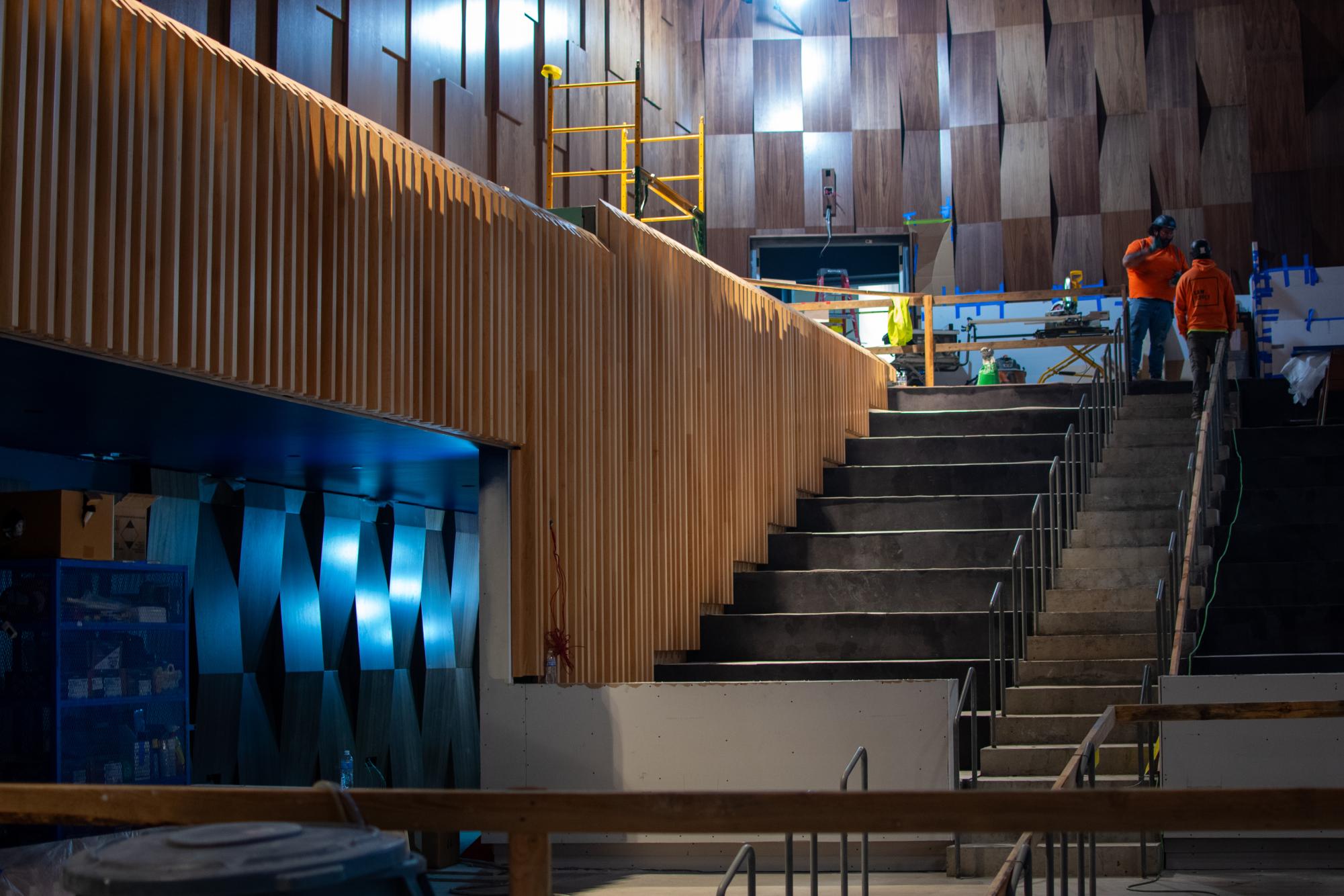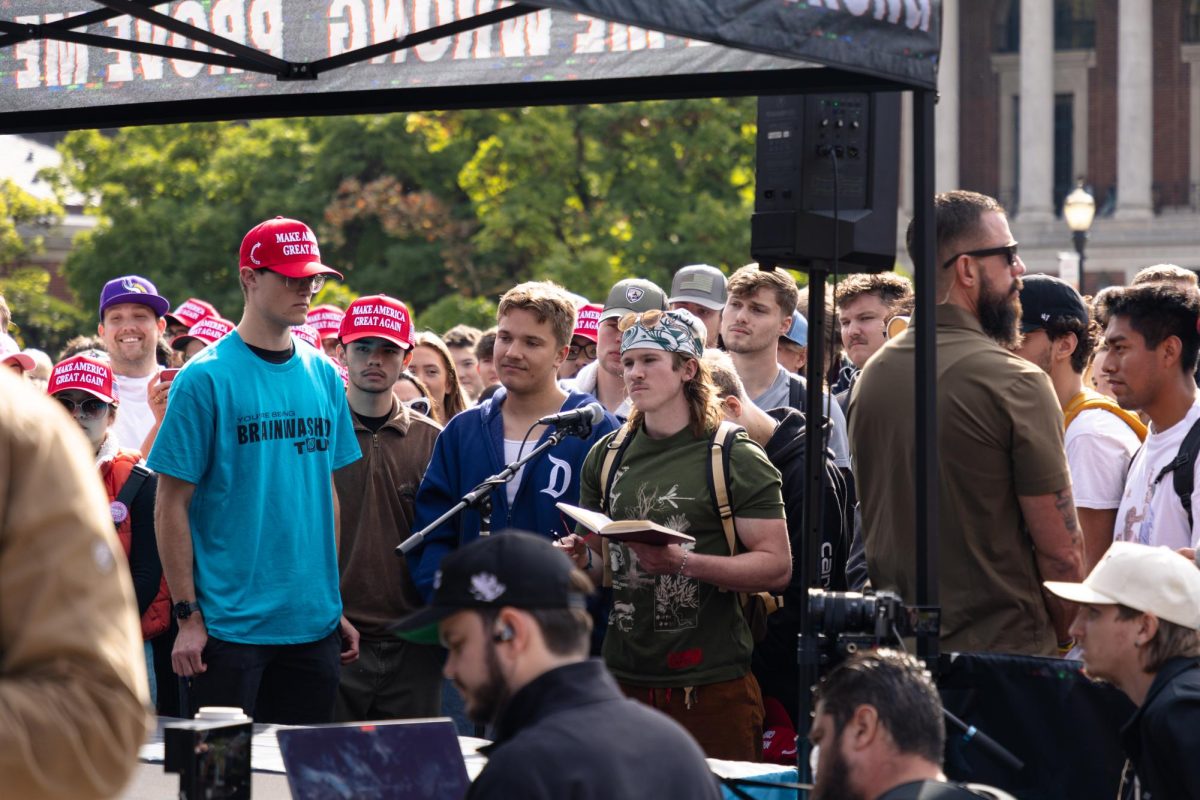The concert hall, one of the six different venues of the new $75 million arts center, lacks any curtains, wings or fly space.
Windows let sunlight pour into the art gallery, despite the risk of ultraviolet light on art, while students attend class in rehearsal and theater rooms rather than traditional classrooms.
These novel choices are part of the Patricia Valian Reser Center for the Creative Arts, which will be a major addition to the cultural landscape of the Willamette Valley.
The center’s 2024-2025 schedule was released on Monday, and tickets will be available starting next Wednesday.
Despite the $75 million price tag, students aren’t paying for the construction of the arts center, according to Peter Betjemann, Patricia Valian Reser executive director of arts and education. Its construction was funded by philanthropy and state bonds, and an endowment made by donor money will help pay for its maintenance.
Upon entering the lobby of the arts center, patrons will be greeted by an ever-changing kaleidoscopic rendering of the Oregon forest generated by artificial intelligence as an art piece that combines science, technology and the arts, Betjemann said.
According to Betjemann, the concert hall will have a woven pattern of panels placed on the walls of the room for acoustics, and it will also lack the aforementioned elements of curtains, wings and fly space, eliminating their acoustic downsides to the room.
“Music is going to sound incredible,” Betjemann said. “We anticipate this is going to be one of the truly finest halls in the Northwest.”
The gallery, curated by Ashley Stull Meyers, will feature annual themes that bring art and science together, with performing arts and humanities panels to accompany them.
“We’re really interested in being in conversation with all the tremendous research that’s going on on campus, so as I am selecting artists I’m looking at and thinking about artists that have research based practices and curiosities that are aligned or very similar with a lot of the scientists that are working on campus,” Meyers said.
According to Meyers, finding these artists involves going around the country and meeting with them to see what they’re making, understanding what their interests and curiosities are and what stage they are in their work.
“These studio visits are a huge part of what my job is as a curator and it’s a lot of fun,” Meyers said.
According to Betjemann, the environment will be more welcoming in the gallery with the addition of windows, and that extra steps will be taken to handle the risk of ultraviolet light on the artworks.
The rehearsal room will provide space for the university’s ensembles while doubling as overflow seating for sold-out events.
While many events will be free for students, some will come at a low admission cost. For example, a fourth of the concert hall seats are sold as student tickets for five dollars in order to help with no-shows. Any seats that are not sold are given for free to students on performance day. For shows by students, they will always be free.
“We’ve thought about this as the last piece in the truly comprehensive research university puzzle,” Betjemann said. “This arts facility raises us up to what all great universities have to have, which is a robust arts program running parallel to its robust technical programs.”
The first exhibition, Sonic Booms, will be curated by Bob Santelli, director of popular music and performing arts, which will help people see how the growth of technology has impacted popular music.
Santelli has had a career in directing and contributing to numerous museums and art programs, including the GRAMMY Museum in Los Angeles, the British Music Experience and the Experience Music Project in Seattle.
“I knew that I wanted to end my career on a college campus, teaching and bringing my experience in popular music to students,” Santelli said. “(I chose) Oregon State because (College of Liberal Arts Dean) Larry Rogers … told me about the possibility of this thing.”
Santelli said that the center will be a major and unique addition to the Willamette region.
“There isn’t a venue like this in the Willamette region,” Santelli said. “The kinds of things presented—programs, concerts, exhibitions—would never have come to the Willamette Valley had we not had (the center).”











































































































